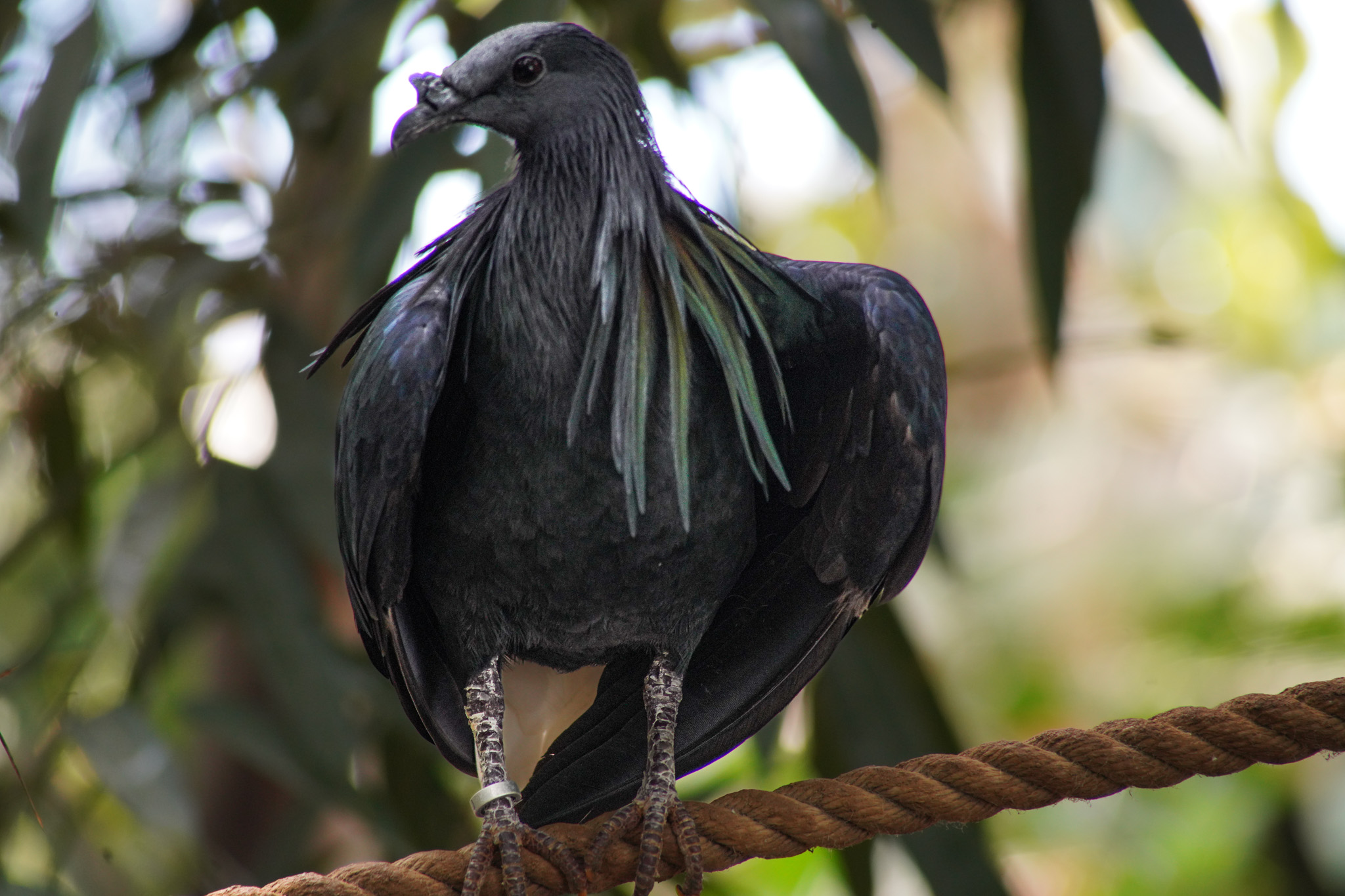This International Pigeon Day meet the closest living relative of the now Extinct dodo! We’re celebrating the beautiful Nicobar pigeons at Marwell Zoo.
These magnificent birds, which come from a chain of islands in Southeast Asia, face numerous threats, including deforestation.
With stunning iridescent plumage, these pigeons are far more eye catching than the common pigeons we’re used to seeing in the UK.
They have a long collar of feathers in green, grey, blue and copper tones, a little like a mane around their neck.
People historically hunted them in the hope of capturing their beauty for themselves. Feathers were coveted but people also made jewellery from the bird’s gizzard stone.
The gizzard stone helps break up ingested food before it reaches the bird’s stomach and is typically incredibly hard and highly polished because of the grinding action they are exposed to.
The Nicobar pigeon is currently listed as Near Threatened on the International Union for Conservation of Nature’s Red List.
It is thought that the Nicobar pigeon’s flightless cousin, the dodo died out due to deforestation, hunting and competition with species introduced by humans.
The number of Nicobar pigeons in the wild is thought to be decreasing as a result of their natural habitat being destroyed and hunting for food and the pet trade.
Like the dodo when it became extinct in the 17th century, these beautiful birds are also at risk because of predators introduced by humans.
Jonathan Newton, Senior Animal Keeper, Birds, said: “One fascinating characteristic of Nicobar pigeons is their unique drinking behaviour. Unlike most other birds, they submerge their entire beaks into water and suck or gulp it up, rather than sipping.
“Nicobar pigeons also have an interesting flight pattern. When flying in groups, Nicobar pigeons prefer to fly in single file or lines, as opposed to the traditional “V” or scattered formations seen in other bird species.”
Marwell’s Nicobar pigeons can be found in the Energy For Life: Tropical House at the heart of the zoo’s 140 acre estate.
For more information about the many animal species living at Marwell Zoo and to book tickets visit www.marwell.org.uk




